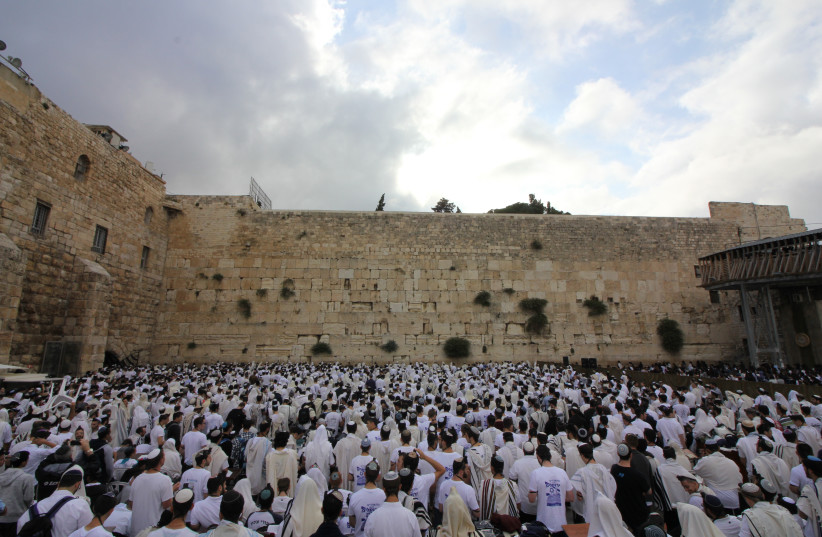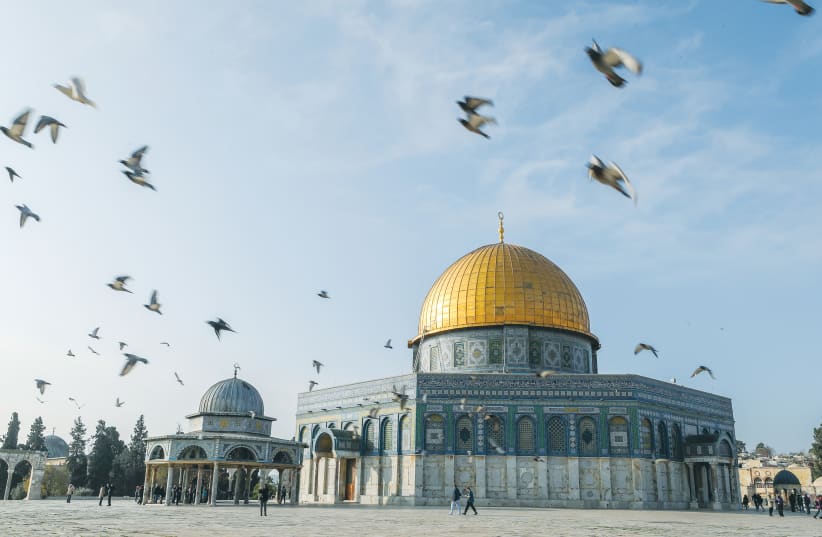One hundred years ago this past week, British census takers announced remarkable news: Jerusalem’s Jewish majority had been restored, despite long centuries of anti-Jewish persecution by the city’s foreign occupiers and in defiance of conventional wisdom about the future of Jews in Israel.
How fitting that the centennial of that revolutionary event in the history of Jerusalem coincided with the latest call by a Palestinian Arab advocate, in the pages of the New York Times, to tear Jerusalem away from the Jewish people.
The Times op-ed, which was published on January 17, was authored by Rashid Khalidi, a Columbia University professor and strident opponent of Israel. Khalidi began the article by expressing his objections to the planned construction of a United States embassy in western Jerusalem, claiming that his family owns a piece of the land in question.
But later in his essay, Khalidi made it clear that his rejectionism is not confined to that particular tract of land, he opposes building a US embassy in Jerusalem on this site or any other.
In other words, the question of whether he really owns any of that land is actually irrelevant to Khalidi’s agenda. He is saying that the Jewish people have no right to any part of Jerusalem and that neither the US nor anybody else should recognize such a Jewish right. The embassy construction issue is just a pretext for Khalidi and his camp to carry on their war to take Jerusalem – all of Jerusalem – away from the Jews.


Jerusalem has been the center of Jewish national and spiritual existence since time immemorial. It was the capital of sovereign Jewish kingdoms for many centuries in biblical times and the site of the holiest place in Judaism, the Temple Mount, where the First Temple and Second Temple stood.
The Jewish people find their way back to Jerusalem
WHEN INVADERS tried to drive the Jews out of Jerusalem, the Jews strove to return. When enemies tried to sever the Jews’ connection to their capital – the Romans even tried to change its name – it was to no avail. Jerusalem remained the centerpiece of Jewish longing, Jewish prayers and Jewish resettlement.
Six centuries after the Romans destroyed the Jews’ Second Temple, Muslim armies conquered Jerusalem, in 638 CE. The occupying forces built al-Aqsa Mosque and the Dome of the Rock shrine atop the ruins of the Jewish Temples.
Under the heel of successive occupiers, Jews became a minority in their own capital. Yet despite the oppressive policies of Jerusalem’s foreign rulers, the Jewish population of the city gradually grew. By the mid-1800s, Jews constituted a plurality in Jerusalem, according to calculations by visitors. Some sources estimated that the Jews became a majority in Jerusalem as early as 1896, but that calculation was not based on a systematic census.
One hundred years ago this past week, in January 1923, the British ruling authorities announced the results of the first official census of the region in modern times. It found that the Jews numbered 34,000 of Jerusalem’s total population of 62,000, a clear majority that was never again to be relinquished.
Considering the hardships Jews had to endure in order to relocate to Turkish-occupied Jerusalem in the 19th and early 20th centuries, the restoration of the city’s Jewish majority was almost miraculous. It was vivid testimony to the strength of the bond between Jews and the holy city of Jerusalem.
Jerusalem’s demographic revolution is also a reminder of the contrast between expressions of Jewish and Muslim interests in the city over the centuries. Jerusalem is mentioned more than 600 times in the Torah but not once in the Koran.
Jerusalem was the capital during the centuries of Jewish rule but it was never made the capital during its years of Muslim rule, including during the Jordanian occupation of 1948-1967. Jews around the world face Jerusalem when they pray, while Muslims face Mecca. Rashid Khalidi’s denial of the Jewish connection to Jerusalem disregards these incontrovertible historical facts, as we are reminded by this week’s 100th anniversary of the amazing restoration of the city’s historic Jewish majority.
The writer is the incoming president of the Religious Zionists of America. He is an attorney and the father of Alisa Flatow, who was murdered in an Iranian-sponsored Palestinian terrorist attack in 1995. He is the author of A Father’s Story: My Fight for Justice Against Iranian Terror.
